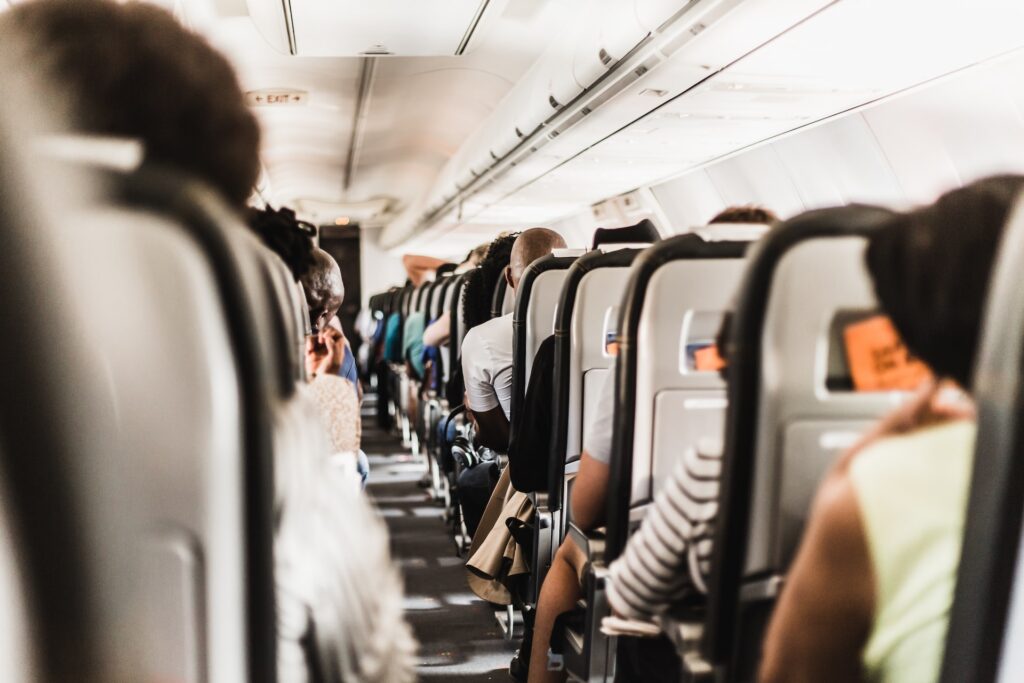Commercial flying was once the highlight of any traveler’s life. It was plush, roomy, and intended to be an experience to be savored. Some of this original mystique has gone, though, replaced with a demand for increased capacity.
What if we could change seating through the use of modern technologies and fabrics to bring back the comfort of those bygone days? And at the same time, we can also mitigate modern threats like the transmission of viruses. Let’s find out what is going on in the industry to address these topics.
COVID-19 & Beyond
We all remember well the early days of the COVID-19 pandemic. Jets parked on the once-active runways and taxiways of the busiest airports in the world. The airspace was practically empty. There had never been anything like it.
To the surprise of many, the aviation industry has bounced back much faster than was expected, with a full recovery expected by 2024. Of course, this is a little more nuanced than a broad assessment suggests: in regions where zero-COVID is still enacted (namely Asia and Africa), recovery is much slower due to the unpredictable nature of travel; i.e., a single positive test shuts down everything.
Apart from these places, we have largely come to grips with the fact that as a whole we will have to learn to live with COVID-19 and viruses as a whole. The best measures are to optimize how we are seated and develop systems that reduce the spread of viruses in the first place.
Mitigation Efforts
We have never successfully killed an outbreak, nor have we ever contained one. The best course of action is to mitigate the effects of an illness. The main problem is the highly contagious and transmissible nature of these viruses.
Materials
Beyond the quality of air filtration, the best option for limiting viral spread lies in seating material; the fabrics used make a huge difference in the control of the transmission.
One of the best materials for anti-viral applications uses a silver-chloride treatment. Humans have used silver for centuries in anti-microbial applications, and it remains one of the best and most accessible materials to weave into fabrics. The material, Replin Fabric Antiviral (RFAV), is effective in contamination mitigation.
Other methods that are being considered are building smart seats that have partitions built into them. Airlines can only remove so many seats before their operation is crippled and no longer profitable, so the only courses of action that make sense are to adapt current seating configurations.
Smart Seats
COVID has dominated the aviation narrative for nearly three years, but it is not the only problem in the industry. Passenger seating is a real issue, namely because the seating experience is mostly miserable. Modern seats are the farthest thing from plush or comfortable.
This is a problem that can be dealt with using advanced manufacturing technologies. And the great thing is that technologies can merge; there is no reason that a seat cannot be comfortable and made with an antiviral material (or materials).
One of the main features of a smart seat is in providing some sense of privacy for the passenger. We get it; there is no personal space on an airplane, especially a budget airline. They are made to move people as efficiently as possible. But a little bit of privacy from barrier wings goes a long way, and it will only help in viral mitigation.

Wrapping Up
It is wonderful seeing the skies full again. While nobody is a fan of the long lines, we are all happy to move along again. However, there are a few measures we can deploy to make it safer and more comfortable. The fabrics we use and seat designs are features that will make air travel more enjoyable and lower risk as we fly into the future.